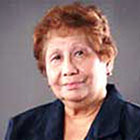
TWO school years ago, I had a class on inter-intra communications in organizations. The subject of the learning outcomes were the students themselves. So, it was easy to rewrite the syllabus following the Outcomes-based Education format as suggested by the Commission on Higher Education. The course focused on communication competency as a linchpin of organizational change and effectiveness. The nature of that competency is at the individual, group and organization-wide level. Toward this end, intellectual discourse focused on communication theories on organization, motivation and leadership; organizational climate and stress; information, power and empowerment; and how these contribute to effective organization communication and ultimately, to the achievement of organizational goals. We wrapped up the course with actual practice in various communication skills such as holding meetings and class presentations. To support such presentations, I shared with the class an earlier column on guidelines on preparing power point slides, a favorite app of graduate students. Of the theories they encountered, they had one four-hour session which, according to them, enlightened them on what, when and why they would think twice before communicating to co-workers some information they deeply felt could be shared or not shared with others.
Continue reading with one of these options:
Ad-free access
P 80 per month
(billed annually at P 960)
- Unlimited ad-free access to website articles
- Limited offer: Subscribe today and get digital edition access for free (accessible with up to 3 devices)


